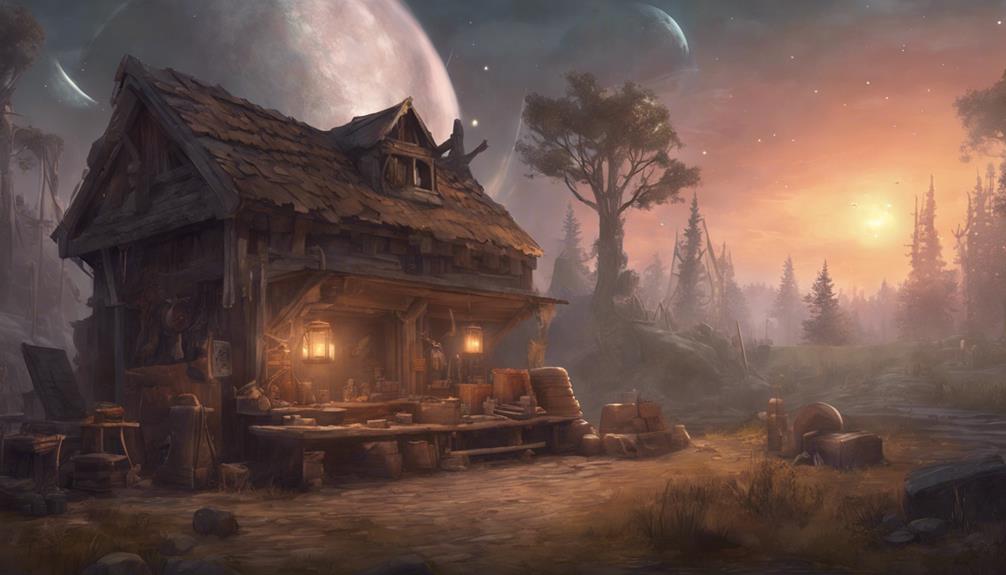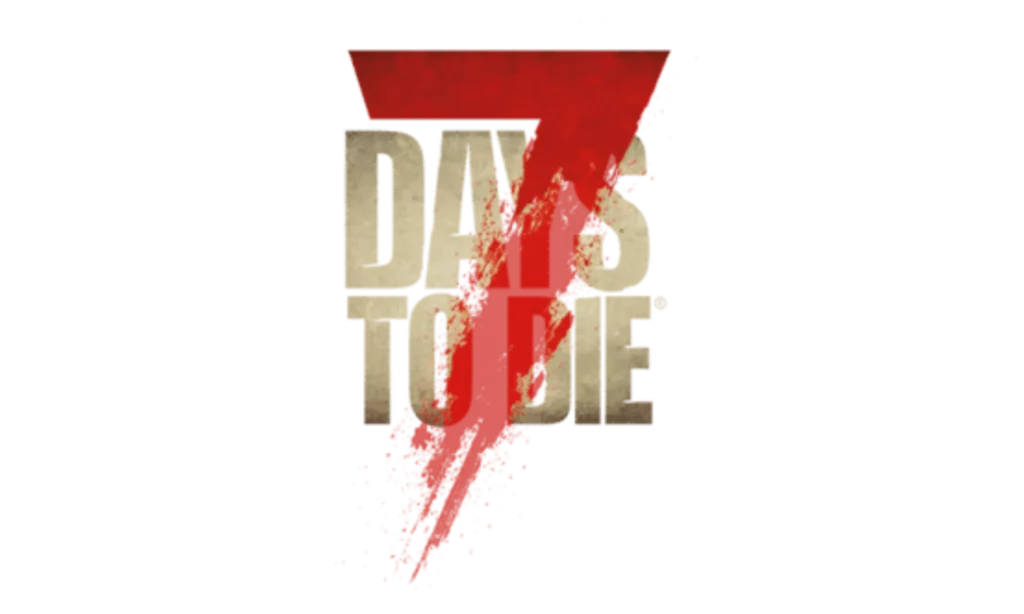In '7 Days to Die,' the Land Claim Block (LCB) safeguards a 41×41 area, giving you control over building and resources amidst the zombie world. It stops others from altering your place and adjusts with server settings. Workstations can be moved in the LCB, but not all interactions are allowed. Understanding these limits helps in smart base design. Security-wise, LCB boosts base safety and stops zombie respawns in cleared spots. You can control zombie presence strategically. Placing multiple LCBs impacts base protection and limits respawning zombies. Crafting it needs five stones. This safeguard is essential for your survival.
Key Takeaways
- LCB protects a 41×41 area, custom settings available.
- Allows relocating workstations, limited object interaction.
- Prevents unwanted building or zombie respawns.
- Enhances base security, flexibility in design.
- Craft with 5 stones for offline protection.
What Is a Land Claim Block?
In 7 Days to Die, a Land Claim Block (LCB) serves as a protective zone within a 41×41 area. This protection zone not only safeguards your base but also allows you to claim a significant area for your activities. The LCB guarantees that other players cannot build or modify structures within this designated space, providing you with a secure area to work on your base without interference.
Moreover, the LCB plays a crucial role in server settings. The default size of the protection zone and the damage multiplier can be adjusted based on the server settings. This flexibility allows server administrators to customize the gameplay experience according to their preferences. By tweaking these settings, they can fine-tune the balance between protection and challenge, catering to different playstyles and preferences within the community.
Picking up Objects in LCB Area

When picking up objects in the LCB area, be mindful of object interaction limitations, building restrictions, and security measures in place. Understanding these points will help you manage your base effectively and avoid potential issues. Ensure you take into account these aspects when relocating objects within your land claim block.
Object Interaction Limitations
Within the protected area of a Land Claim Block (LCB), your ability to pick up workstations and electrical devices provides valuable flexibility for base management. This pick-up functionality allows for easy relocation of objects like relays, switches, and motion sensors within the LCB's protection zone. However, it is essential to recognize that certain limitations exist regarding object interaction within the LCB. While you can freely move workstations and electrical devices, other structures or natural terrain elements cannot be picked up. Understanding these limitations is vital for efficient base design and organization. By being mindful of what can and cannot be interacted with in the LCB area, you can effectively plan and optimize your base layout to suit your gameplay needs.
Building Restrictions in LCB
Understanding the limitations of object interaction within the Land Claim Block (LCB) entails grasping the building restrictions that affect picking up objects in the LCB area. The LCB allows you to pick up workstations and electrical devices by pressing E, facilitating base relocation, reorganization, and enhancing design flexibility. Not only does the LCB offer this advantage, but it also prevents Point of Interest Zombies from respawning in cleared areas such as buildings, houses, and landmarks. The protection zone created by the LCB has a default size of 41×41, with a damage multiplier of 4x for blocks inside it. Remember, you can only have three active LCBs at a time, and placing a new one deactivates an old one, reducing its durability.
Security Measures in Place
To enhance the security of your base, utilize the feature that allows you to pick up workstations and electrical devices within the Land Claim Block (LCB) area by pressing E. This function is essential for base relocation, reorganizing base layout, and enhancing flexibility in base design. When you claim an area with the LCB, it prevents Point of Interest Zombies from respawning in cleared locations like buildings, houses, parks, and landmarks. Picking up objects in the LCB area not only helps secure these locations after clearing them but also facilitates base building in those areas. Remember that the protection zone created by the LCB defaults to 41×41 in size, with internal blocks benefiting from durability and damage multipliers set to 4 by default.
Point of Interest Zombies

Clearing Point of Interest locations in 7 Days to Die becomes more manageable with Land Claim Blocks (LCBs) that prevent zombie respawns. These LCBs play a significant role in spawn suppression, ensuring that areas like buildings, houses, parks, garages, and stores remain zombie-free once cleared. By securing these locations, players can focus on building their bases without the constant threat of Point of Interest Zombies reappearing.
It's important to note that the spawn suppression achieved through LCBs is limited to Point of Interest Zombies within the claimed area. This means that while players can effectively control zombie spawns in specific locations using LCBs, open-world or horde zombie spawns outside the claimed area remain unaffected. This targeted suppression allows players to carve out safe spaces for themselves, enhancing the overall base-building experience in the game.
In essence, Land Claim Blocks not only secure cleared areas but also provide a sense of control over zombie spawns, particularly in Point of Interest locations. This feature adds a strategic element to gameplay, empowering players to shape their environment and fortify their bases in the zombie-infested world of 7 Days to Die.
Protection Zone Features

Now let's talk about the POINTS related to Protection Zone Features. You'll explore options for adjusting the zone size, setting building permissions, and defining player interaction rules within the protected area. These aspects play an important role in shaping the gameplay experience and ensuring a balanced environment for all players.
Zone Size Options
By adjusting server settings, you can customize the size of the protection zone surrounding your Land Claim Block in 7 Days to Die. Here are some essential points to keep in mind:
- The default area covered by the protection zone is 41×41 blocks.
- The protection zone extends infinitely above and below the Land Claim Block, ensuring thorough coverage.
- All blocks within this protection zone receive a damage multiplier, usually set at 4x, making it important for safeguarding your structures.
Customizing the protection zone size allows you to tailor your defense strategy to suit your gameplay style and needs effectively. Remember, a well-protected area can be the key to survival in the harsh world of 7 Days to Die.
Building Permissions
To manage building permissions within the protection zone established by your Land Claim Block in 7 Days to Die, consider the following essential features. The Land Claim Block (LCB) creates an area of 41×41 blocks where all blocks receive a damage multiplier, usually set at 4x by default. Additionally, new players in Survival PvP automatically receive a land claim keystone block to mark their territory. The LCB allows players to pick up workstations and electric devices within its area, providing flexibility for base construction. It's important to be aware that destroying the LCB will render the area unclaimable for a period, impacting building permissions until a new LCB is placed. Be mindful of these aspects to effectively manage your building permissions within the protection zone.
Player Interaction Rules
When exploring the protection zone features in 7 Days to Die, make sure you follow the designated player interaction rules for effective base management.
- Respect Other Players: Avoid placing your land claim block too close to another player's base to prevent conflicts.
- Maintenance is Key: Remember to log in periodically to prevent your land claim block from going offline, which could lead to looting and destruction of your base.
- Strategic Placement: Guarantee your land claim block is strategically placed to cover all your essential structures, as any block outside its range is vulnerable to damage.
Destroying a Land Claim Block

If you destroy a Land Claim Block, objects like Workbenches become unmovable within that area. This means that once a Land Claim Block (LCB) is destroyed, the items in its vicinity, such as Workbenches, will no longer be able to be picked up or moved. It is important to keep in mind this consequence before taking action to destroy an old LCB.
Additionally, destroying a Land Claim Block means that the area it protected will no longer have offline protection. This can leave your base or belongings vulnerable to other players or the game's environmental threats. Hence, it is essential to have a strategic plan in place when deciding to remove an LCB.
Placing Multiple LCBs

Strategically placing multiple Land Claim Blocks in 7 Days to Die can enhance your base's security and expansion capabilities. By utilizing multiple LCBs effectively, you can maximize your base protection and control over the surrounding area. Here are some key points to keep in mind when placing multiple LCBs:
- Limit of Active LCBs: While you can place numerous LCBs in the game, only three can be active simultaneously. Activating a new LCB will deactivate an old one, causing its durability to decrease gradually. Hence, choose the locations for your active LCBs wisely to maintain the best protection for your base.
- Unlimited Placement: There is no current restriction on the number of LCBs you can place in 7 Days to Die. This gives you the opportunity to strategically position LCBs to secure different sections of your base or to claim expansive territories for future development.
- Base Protection Impact: Destroying an LCB not only removes its protective influence but also renders the area unclaimable for a certain period. Thoughtfully managing multiple LCBs can help mitigate the risks associated with losing control over important areas of your base, ensuring its overall security and defense.
LCB Activation Period

To guarantee continuous protection for your base in 7 Days to Die, the Land Claim Block (LCB) must remain active as long as you are present in the game. When you are offline, the LCB provides protection through an offline safeguard duration. This duration refers to the period during which your base is safeguarded even when you are not actively playing.
By default, the offline safeguard duration in 7 Days to Die is set to 7 days. However, server settings allow for adjustments to this timeframe. The offline safeguard multiplier kicks in when the game recognizes that you are offline, reducing damage to blocks within the LCB's boundaries. This feature ensures that your base remains secure even when you are away from the game for extended periods.
Understanding the offline safeguard duration is important for maintaining the integrity of your base in 7 Days to Die. Knowing that the LCB offers protection while you are offline can provide peace of mind, allowing you to focus on other in-game tasks without worrying about potential damage to your base. As long as the LCB remains active, your base will benefit from the security measures in place, ensuring its safety even when you are not actively playing.
Crafting a Land Claim Block

Craft your Land Claim Block efficiently using just five stone materials. Crafting this essential item in 7 Days to Die is a straightforward process that can provide you with valuable protection for your base and belongings.
To craft a Land Claim Block, follow these simple steps:
- Gather five stone materials from your surroundings. Stones can typically be found easily throughout the game world, especially near rocky terrains or in caves.
- Access your crafting menu and locate the recipe for the Land Claim Block. The recipe should indicate that you need five stones to create the block.
- Once you have the required materials, initiate the crafting process to create your Land Claim Block. This item will enable you to establish a protected zone where only you and your allies can build, ensuring the security of your base and possessions.
Frequently Asked Questions
What Is the Point of the Land Claim Block in 7 Days to Die?
In 7 Days to Die, the Land Claim Block serves as your shield, creating a secure haven where you can build and stash your stuff without worrying about unwanted visitors. It gives you a protective bubble of control, keeping your area safe from intruders and pesky zombies. With the block, you can easily relocate your gear and workstations by pressing E, allowing for flexible base management. It's your key to fortifying your base and keeping your possessions safe.
Can I Have More Than One Land Claim Block in 7 Days to Die?
Yes, you can have more than one land claim block in 7 Days to Die. Having multiple blocks allows you to secure and manage larger areas effectively. Keep in mind that only three can be active at a time, so managing them strategically is important for protecting your bases. By utilizing multiple LCBs, you can enhance your defenses and safeguard multiple locations simultaneously.
Do Land Claim Blocks Stop Zombies From Spawning?
Yes, Land Claim Blocks in 7 Days to Die can stop zombies from spawning in their vicinity. Placing them in cleared areas secures those zones from zombie respawns. However, they won't prevent open world or horde zombie spawns. To completely suppress zombie spawns, you need to replace or cover non-player-placed blocks. Keep in mind that some entities like vultures may still appear regardless of the Land Claim Blocks.
How to Claim Blocks in Minecraft?
To claim blocks in Minecraft, you need to use a tool called a 'Claim Block.' Simply place the Claim Block on the block you want to claim as your own. This action establishes your ownership of that specific area, preventing others from altering it. Remember to protect your Claim Blocks as they are essential for maintaining control over your territory in the game.
Conclusion
To sum up, the Land Claim Block in 7 Days to Die acts as a fortress safeguarding your territory from the zombie horde. With its ability to establish a safe zone and deter unwanted intruders, it's an essential tool for survival in the apocalypse. So craft your LCB, claim your land, and fortify your base like a vigilant guardian watching over its domain. Your survival depends on it.










